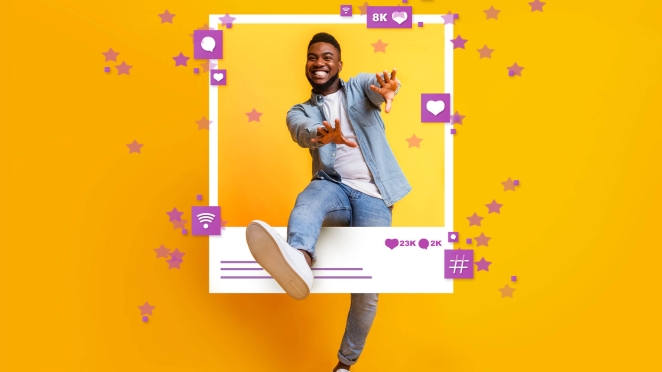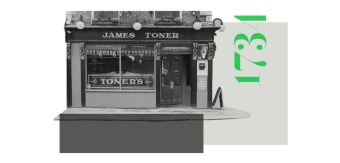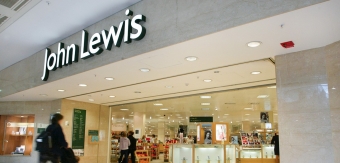In 2022, influencer marketing experienced significant growth to become a $16.4bn market and endorsement-based campaigns have become a key pillar of brands’ strategies when targeting full- funnel objectives.
What influencers offer brands is access to highly engaged audiences, built on a pre-established foundation of trust, that can deliver huge impact for awareness and sales conversion. So much so, experts interviewed for our social commerce whitepaper agreed that influencers could become the most important medium for social commerce.
However, recent brand crises such as ‘Mascara gate’, which saw followers accuse Mikayla Nogueira of wearing fake eyelashes during sponsored content promoting a L’Oréal mascara, are an example of what can go wrong if a campaign doesn’t consider risk and impact with equal importance.
Scandals such as Mascara Gate can erode consumers’ trust in influencer advertising, with TikTok’s ‘deinfluencing’ trend - whereby influencers share ‘honest’ reviews of products that have been overhyped through brand endorsements – being a symptom of this.
It serves as a reminder to the industry that the success of influencer partnerships lies in the authenticity of collaborations, emphasising the critical role of trust and transparency. To achieve low-risk high-impact endorsement campaigns, marketers must diligently adhere to a specific set of best practices.
Using data to identify the right influencers

Due to the volume of creators now available for brand partnerships, choosing the right influencer can be a daunting task. By leveraging data, brands can identify those influencers who will offer the best opportunity to deliver against a campaign’s objectives.
As the industry matures and organic reach becomes increasingly difficult on some platforms, there has been a shift away from large follower counts forming the crux of influencer partnership decisions.
There is now a greater understanding of how celebrity, macro, micro and niche influencers can support different stages of the marketing funnel. Brands are developing more sophisticated strategies that include a combination of macro and micro influencers to achieve different campaign objectives.
Our research found that influencers with 100,000 followers (classified as micro-influencers) are in high demand, with 55% of survey respondents believing them to have a better connection with their target audience in comparison to high-profile peers.
Compared to mega-influencers, micro-influencers are more likely to sit closer to target audiences, offering greater relatability. This understanding can reduce the risk of brands appearing insensitive to external factors, such as the economic pressures catalysed by the surge in cost of living.
Influencer Intelligence’s whitepaper revealed that brands are experiencing the most success with sales-led campaigns when partnering with micro-influencers (43 per cent). While micro-influencers can be particularly effective at converting sales, celebrity and macro influencers are effective at raising brand awareness amongst a large audience.
Beyond follower count, data metrics such as celebrity equity, sentiment, and average sponsored post engagement are crucial to identifying those influencers best suited to achieve a campaign’s objectives. Analysis of an influencer's followers will also ensure partnerships reach the relevant target audience.
Data platforms built specifically for influencer marketing provide a variety of insights, empowering marketers to identify ambassadors who are closely aligned with the brand and reach an engaged, valuable audience.
Taking this further, the Influencer Intelligence platform offers influencer benchmarking, allowing brands to compare one ambassador directly against another, empowering brands to deeply analyse influencers and adopt a data-driven approach before investing.
While data is key, by nature influencer marketing is about the connection audiences form with creators. The chemistry between a brand and influencer must play a role in talent selection, and this requires a human approach.
Influencer Intelligence offers this additional layer of consultancy on top of metrics, where the tone and aesthetics of content produced by an influencer is incorporated into the process to identify talent that will spark the right emotional connection between a brand and audience.
Authenticity is King

Context is crucial for influencer campaigns. The more contextually relevant sponsored content is to what that influencer usually creates, the more authentic the advert comes across.
This isn’t to say that influencers are rigid in their content, but brands must ensure that the influencer (and their audience) is relevant and aligned with the brand’s core values. Campaign content should appear seamless against the content an influencer typically produces.
Consumers are growing increasingly savvy, so utilising influencers that are not relevant to a brand or product and are purely selected based on engagement or reach statistics risks appearing disingenuous, diminishing trust as a result.
If possible, brands should select ambassadors that have previously demonstrated positive engagement with a brand outside of paid projects. The endorsement will appear as a natural fit, with followers aware that the influencer was a fan of the brand before receiving sponsorship.
Audiences may also be more receptive to tactics such as content whitelisting campaigns, where the brand performs a temporary ‘takeover’ of an influencer’s channel. Employing these tactics raises the authenticity of campaigns, increasing the likelihood of a positive impact.
Channel Diversification

It’s highly unlikely an influencer possesses an equal share of engaged followers and identical demographics across all content channels. Brands should consider which platform will best serve a campaign’s objectives and reach the most relevant audience.
Each platform will also carry intrinsic objective-based benefits. TikTok, for example, is currently leading the channel race when it comes to engagement, with a benchmark rate of 5.96% compared to Instagram’s 0.83%, while Instagram has been found to be the most effective platform for influencer-led social commerce, due to the in-built ‘Instagram Shopping’ feature.
A multi-influencer approach, that targets different platforms based on audiences reached and campaign purpose, can be effective at delivering ROI. Brands must consider which platforms reach the right audiences to maximise campaign performance.
Creating impactful yet responsible content

Before selecting an ambassador, it's critical for brands to understand the emotional connection an influencer has with their audience along with the powerful insights data can offer in terms of engagement and persona metrics.
But brands also need to have confidence in the level of trust an influencer’s audience places in their recommendations and opinions. Previous advertisement reception, as well as the reputation or ‘sentiment’ around the influencer can prove insightful to determine how trustworthy an influencer is perceived.
As much as an influencer must trust a brand to support them in their endorsement, brands must trust influencers to create content responsibly and in adherence to campaign messaging.
Brands must have protocols in place to promote transparency, ensuring influencers correctly tag sponsored collaborations and that advertising content is clearly identifiable to the consumer.
Elements of content creation, such as using the product the way it is intended and providing a review or demonstration that does not deceive consumers, can be baked into contractual agreements. Equally, content analysis post-creation but pre-publication can be a key time to tweak campaigns to avoid risk and increase impact.
The ingredients for an effective influencer campaign can be distilled into three parts; identifying the objectives of an influencer campaign first and working back to identify how to deliver this message to a customer; thorough processes to find the right creators through data analysis and human assessment, and taking the time to do the due diligence before, after and during campaigns.
If executed correctly, influencer partnerships will demonstrate their efficacy throughout funnel objectives, and give a campaign the best opportunity for success.
By Sarah Penny, Content & Research Director at Influencer Intelligence






